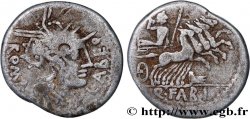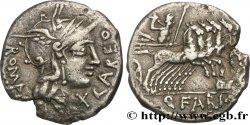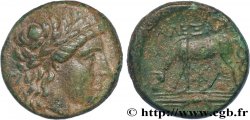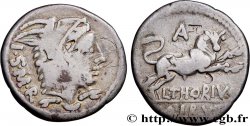v32_0086 - FABIA Denier
MONNAIES 32 (2007)
Startpreis : 145.00 €
Schätzung : 200.00 €
Erzielter Preis : 145.00 €
Anzahl der Gebote : 1
Höchstgebot : 175.00 €
Startpreis : 145.00 €
Schätzung : 200.00 €
Erzielter Preis : 145.00 €
Anzahl der Gebote : 1
Höchstgebot : 175.00 €
Type : Denier
Datum: 124 AC.
Name der Münzstätte / Stadt : Rome ou Italie
Metall : Silber
Der Feingehalt beträgt : 950 ‰
Durchmesser : 19 mm
Stempelstellung : 2 h.
Gewicht : 3,90 g.
Kommentare zum Erhaltungszustand:
Exemplaire sur un flan large bien centré des deux côtés. Très beau portrait. Revers parfaitement centré. Très jolie patine de médaillier
N° im Nachschlagewerk :
Vorderseite
Titulatur der Vorderseite ROMA/ LABEO.
Beschreibung Vorderseite Tête casquée de Rome à droite ; sous le menton, marque de valeur, X.
Übersetzung der Vorderseite "Roma/ Labeo", (Rome/ Labeo).
Rückseite
Titulatur der Rückseite Q. FABI À L’EXERGUE.
Beschreibung Rückseite Jupiter dans un quadrige galopant à droite tenant un foudre de la main droite et un long sceptre de la main gauche ; au-dessous du cartouche, un rostre de navire tourné à gauche.
Übersetzung der Rückseite "Quintus Fabius", (Quintus Fabius).
Kommentare
Pour ce type, M. Crawford a relevé une estimation de 300 coins de droit et de 375 coins de revers. Sur cet exemplaire, le rostre est identifiable. Frappé en 124 avant J.-C. à un moment où les Romains sont en guerre contre les Allobroges et les Arvernes, ce type de denier a pu circuler en Gaule, mais ne semble pas y avoir été imité. Cassure de coin sur l’un des chevaux.
For this type, Mr. Crawford noted an estimate of 300 obverse dies and 375 reverse dies. On this example, the rostrum is identifiable. Struck in 124 BC at a time when the Romans were at war with the Allobroges and the Arverni, this type of denarius may have circulated in Gaul, but does not appear to have been imitated there. Die breakage on one of the horses
For this type, Mr. Crawford noted an estimate of 300 obverse dies and 375 reverse dies. On this example, the rostrum is identifiable. Struck in 124 BC at a time when the Romans were at war with the Allobroges and the Arverni, this type of denarius may have circulated in Gaul, but does not appear to have been imitated there. Die breakage on one of the horses







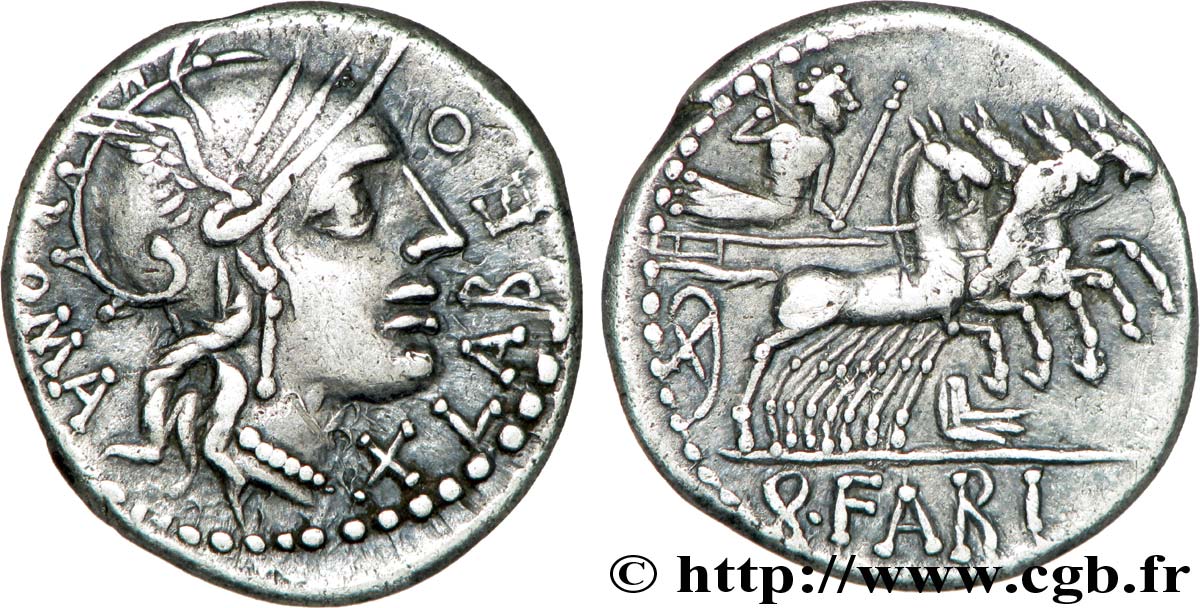
 Berichten über einen Fehler
Berichten über einen Fehler Die Seite drucken
Die Seite drucken Teilen meiner Auswahl
Teilen meiner Auswahl Stellen Sie eine Frage
Stellen Sie eine Frage Einlieferung/Verkauf
Einlieferung/Verkauf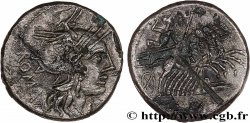
 Details
Details
